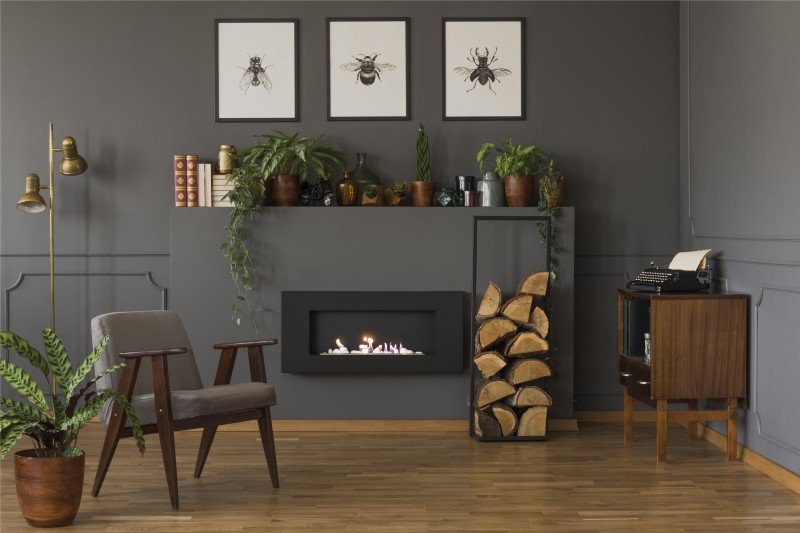The Fireplace: A Warm Embrace of Tradition and Comfort
Fireplaces have been an essential part of human habitation for centuries, functioning as a source of heat, a meeting place, and a sign of convenience. While Cheap Fireplace Online may vary remarkably from their ancient ancestors, the appeal of a fireplace sustains. This post checks out the various elements of fireplaces, including their history, function, types, and upkeep, while also resolving often asked concerns.
The Evolution of Fireplaces
Fireplaces date back to ancient times when open flames were used for cooking, heating, and protection from wildlife. Over the centuries, fireplaces progressed from basic fire pits to the sophisticated renditions we see today. Here is a short timeline of their advancement:
- Prehistoric Era: Cavemen used open flames for warmth and cooking. Wind and smoke often blew into residences.
- Middle Ages: Stone and brick fireplaces ended up being typical in homes and castles, incorporating chimneys to bring smoke outside.
- Renaissance: Elaborately developed mantels emerged, and fireplaces ended up being centers of social interaction.
- Industrial Revolution: Innovations in heating materials resulted in a variety of styles and functionalities.
- Modern Era: The introduction of gas, electric, and bioethanol fireplaces offered cleaner alternatives to traditional wood-burning systems.
Table 1: The Evolution of Fireplaces
| Age | Attributes |
|---|---|
| Ancient Era | Open flames for heat and cooking |
| Middle Ages | Stone and brick structures with early chimneys |
| Renaissance | Ornate mantels, social centers |
| Industrial Revolution | Varied designs, advent of brand-new materials |
| Modern Era | Gas, electric, and bioethanol choices |
The Purpose of a Fireplace
Fireplaces serve double functions: they supply physical warmth and create a psychological environment. Homeowners typically gather around the fireplace to bond, share stories, and enjoy a cozy setting. The radiance of a fire can be relaxing, contributing to a sense of relaxation and intimacy. Beyond individual satisfaction, fireplaces also offer functional benefits, consisting of:
- Home Heating: Effective heat source, particularly in cooler environments.
- Increased Home Value: A properly designed fireplace can enhance the aesthetic value of a home.
- Emergency Heating: In case of power failures, wood-burning fireplaces can function as a vital heat source.
- Visual Appeal: A focal point that adds to interior design.
Kinds of Fireplaces
Today, fireplaces can be found in different styles and fuel types, accommodating a varied series of preferences and settings. Here are some typical types:
Wood-Burning Fireplaces:
- Traditional fire pits
- Traditional masonry fireplaces
- Require considerable maintenance and chimney maintenance
Gas Fireplaces:
- Available in both direct vent and ventless ranges
- Simpler to use and preserve than wood-burning fireplaces
- Supply instant heat with a flick of a switch
Electric Fireplaces:
- Offer associated heat sources without real flames
- Often created to imitate traditional fireplaces
- Ideal for smaller spaces and homes without a chimney
Bioethanol Fireplaces:
- Use bioethanol fuel, supplying a sustainable alternative
- Require no ventilation and can be positioned anywhere
- Safe and easy to maintain
Table 2: Types of Fireplaces
| Type | Fuel Source | Functions | Maintenance Requirements |
|---|---|---|---|
| Wood-Burning | Wood | High atmosphere, heat source | Regular chimney cleansing |
| Gas | Natural gas or lp | Immediate heat | Very little, occasional maintenance |
| Electric | Electrical power | Easy setup | Really low upkeep |
| Bioethanol | Bioethanol fuel | Ventless, portable | Low, primarily cleaning up |
Upkeep and Safety Considerations
Owning a fireplace involves specific duties, especially regarding its safe operation and long-term upkeep. Here are essential upkeep ideas and safety standards:
Maintenance Tips:
- Annual Inspection: Always have your chimney and fireplace checked at least as soon as a year by a qualified professional.
- Routine Cleaning: Clean out ashes and particles after each usage, and ensure the flue is open before beginning a fire.
- Check for Cracks: Inspect masonry for fractures or damage to prevent structural issues.
- Usage Proper Fuel: Only use dry, experienced wood for wood-burning fireplaces; do not burn cured wood.
Security Guidelines:
- Install Smoke Detectors: Ensure smoke alarm are functional, evaluating them regular monthly and replacing batteries as required.
- Keep a Fire Extinguisher: Have one neighboring, even if a fireplace is used occasionally.
- Supervise Flames: Never leave a fire ignored, and make sure children and pets are monitored around the fireplace.
Frequently Asked Questions (FAQs)
1. How can Best Fireplace UK minimize smoke from a wood-burning fireplace?
To lessen smoke, use dry, experienced wood, and make sure that your chimney is clean and unobstructed.
2. Is simply click the up coming article to use gas fireplaces throughout a gas leak?
Never utilize a gas fireplace during a gas leakage. Right away evacuate the area and contact gas services for help.
3. Can I install an electric fireplace myself?
Electric fireplaces are generally simple to install, however it is recommended to seek advice from professionals to guarantee security and compliance with local building codes.
4. What is the best type of fireplace for small areas?
Electric fireplaces or bioethanol designs are typically best for small spaces, as they do not require comprehensive ventilation or structural modifications.
Fireplaces have transcended their original purpose of providing heat to end up being treasured components of home design and household life. They evoke memories of warmth, events, and togetherness while providing practical advantages that enhance modern living. By comprehending the various types of fireplaces, their maintenance, and safety practices, homeowners can take pleasure in the timeless appeal of this cherished function for generations to come.

